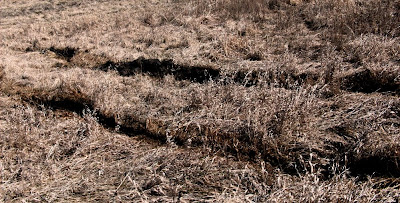
I just thought I would give a quick farm update this morning before I head out for another crazy day. I have lots to catch up on at work today and then a Junior Varsity/Varsity soccer double header this evening. Should be a busy day! But, there is good news to report on the farm so I thought I would take a second to share a little before I hit the dusty roads to town.
The Pigs are Being Pigs: Really, that is about it. They are eating, lounging around, sleeping, and really not rooting up to much (which is nice). I really like the temperament of these pigs and especially of the sow. They had been worked with to a point and were fed daily by hand so they are used to people being around. I think they will make some nice pork!
The Cows are Being Cows: They are still in the "lot" right now eating hay because the fencing isn't up yet, but the grass isn't totally around yet either so that isn't a huge problem. I have been toying with the idea of letting them out during the day into an electrified paddock to see if they will trample down and eat some of the tall grass ... we will see.
The Chickens are Being Chickens: Really we only have three chickens right now and we only know where one is laying at the moment. But, since she is laying consistently we have enough eggs to get by. It is nice to see them out in the cow lot flipping over cow pies and digging around though, and that only serves to get me excited about getting more. Hopefully we will take a trip north soon (to my uncle's) to expand the flock.
Blue is Back: I am happy to say that our "new to us" Ford 5000 tractor is back from the shop as of yesterday and I am ready to put her to work. It seems the folks at Belzer Equipment did a good job on the repairs and I know that they were very good to us on the bill. When it was all said and done they fixed the lights, put a new seal kit on the steering cylinder (the reason it went in), replaced the temperature sender, replaced the fuel pump, adjusted the pump timing, and a replaced a couple other small things. Between that and the engine overhaul I think we should have a pretty good tractor! I know there will eventually be something that wears out again, but at least we know we have some things fixed up!
Other than that, plans are going well for the various projects that need to be done this spring. We have the storm shelter deal all figured out and are just waiting for some dry ground, I'm waiting on a bid for our shed, fencing things are coming together (I just need to carve out some time), and we are enjoying spring days on the farm as a family (when we are all home together).




















